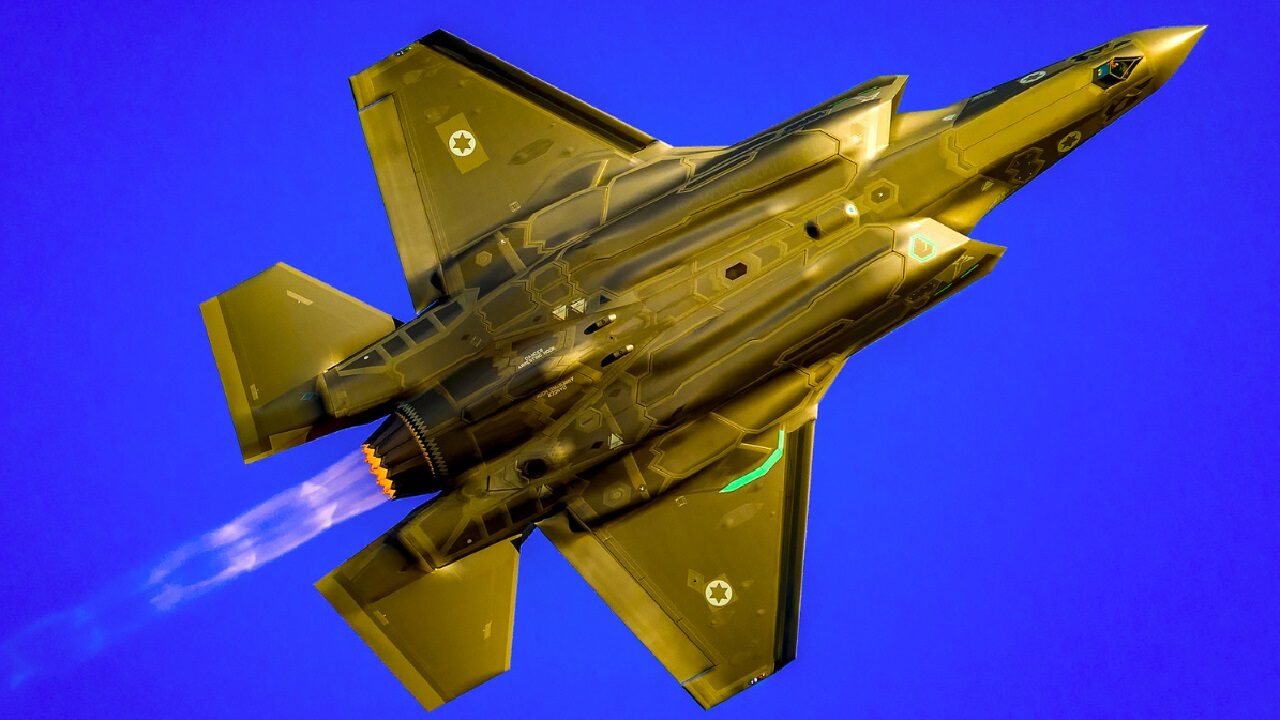The F-35I Is Back: On Sunday, the Israeli Air Force (IAF) returned its fleet of F-35I Adir airframes to full service following its grounding in July. The U.S. discovered an issue impacting the fighter jet’s ejection seats last month, which led the Israelis to examine its 33 airframes. Under the guidelines made by IAF Chief Maj. Gen. Tomer Bar, two Adirs were examined daily by maintenance teams to verify their safety. Without receiving special authorization from Bar, each fighter was grounded for caution. The IAF’s 33 fighters were all cleared for flight, however, the U.S. Air Force’s F-35 grounding remains.
F-35I Safety Concerns After Explosive Found Not to be in Ejection Device
In late July, the U.S. Air Forces grounded its fleet of F-35 fighters on a temporary basis, citing a potentially fatal defect discovered in some of its aircraft’s ejection seats. Ejection seats are designed to rescue an aircraft’s pilot or crew in case of an emergency. Generally, the canopy is removed, the pilot is restrained and a catapult is fired by gas pressure, which launches the pilot or crew away from the aircraft. Ejection seats are only used as a last resort when a pilot unquestionably decides there is zero chance of salvaging the airframe. Pilots are extremely valuable assets to any military since they require immense amounts of money and time to train, plus it is a human life. Ejection seats function as a pilot’s last line of defense – if the airframe goes down, the pilot is still protected vis-à-vis this tool. Therefore, the seat’s benefits are twofold, they help prevent tragedy while also preserving a valuable military asset.
During a routine maintenance check in April, officials discovered a faulty component inside an airframe’s ejections seat. A spokesperson for the Air Force’s Air Combat Command, Alexi Worley, said that the issue involves the explosive cartridges inside the ejection seats that help it propel from the aircraft. According to the Air Force Times, a maintainer uncovered the issue after feeling that the ejection cartridge was suspiciously light during the routine check. Further investigation uncovered that the magnesium powder used to launch a pilot from the fighter was missing, which would cripple the ejection seat’s functioning. Worley added that “On July 19, we began a Time Compliance Technical Directive to inspect all of the cartridges on the ejection seat within 90 days,” Worley said in the statement. “Out of an abundance of caution,” she said Air Combat Command units “will execute a stand-down on July 29 to expedite the inspection process. Based on data gathered from those inspections, ACC will make a determination to resume operations.”
U.S. Still Has a Grounding Order of its F-35 Aircraft
While the Navy asserted that only jets “within a limited range of lot numbers are affected,” the Navy, Air Force, and Marine Corps all grounded flights on several types of fixed-wing aircraft. The IAF followed suit, halting training flights for its squadrons of F-35I Adir fighters. Israel’s 33 fighters are divided into two squadrons under the IAF, the 116th Lions of the South Squadron and the 140th Golden Eagle Squadron, in addition to the Air Force’s training squadron. Israel’s ‘Adir’ variant of the Lockheed Martin F-35 Lightening II Joint Strike Fighter represents the premier fighter in the IAF’s arsenal. The IAF’s Adir is a heavily modified version of the American prototype. In addition to being the first procurer of the U.S.-made fifth-generation jet, Israel became the first country to fly the F-35 in combat.
In May 2018, then-IAF commander Major General Amikam Norkin announced that the military’s fleet of F-35I Adirs participated in a massive Israeli retaliatory strike against Tehran and its regional proxies in Syria, claiming “We (the IAF) performed the F-35’s first ever operational strike. The IAF is a pioneer and a world leader in operating air power.” Since then, the IAF has relied on the capabilities its Adir airframes provide more heavily.
In March, the IDF revealed that its fleet took part in its first aerial engagement, taking out at least two Iranian drones in 2021. According to The Drive, “The Israel Defense Forces (IDF) have also released video, showing one of the drones being engaged, from the perspective of an F-35I. While unclear if taken from the jet’s Electro-Optical Targeting System (EOTS) or the helmet-mounted display, this is the first time we have seen an F-35 taking part in an aerial engagement of this kind.”
Over the last few years, there has been a sharp uptick in Iranian-sponsored attacks targeting Israeli and U.S. forces in the region. As hostility continues to build, the IAF will likely rely on its fleet of F-35I Adirs more heavily. While the recent grounding of its airframes due to the potentially faulty ejection seats was brief, any additional findings that would lead to a prolonged halting in training would be detrimental to the IAF’s mission readiness.
Maya Carlin is a Middle East Defense Editor with 19FortyFive. She is also an analyst with the Center for Security Policy and a former Anna Sobol Levy Fellow at IDC Herzliya in Israel. She has by-lines in many publications, including The National Interest, Jerusalem Post, and Times of Israel.

